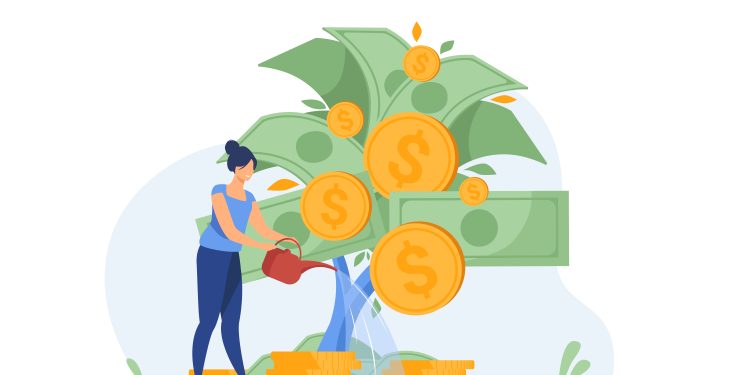Supporting the financial well-being of their customers may not top the list of services banks offer their customers, but maybe it should.
With the cost of living skyrocketing in the U.S. (gas is $4.94 a gallon on average, food costs are up 11.9 percent from last year, and rent rates are through the roof), achieving some form of monetary breathing room is at the forefront of most consumers’ minds.
One study found 64 percent of Americans currently live paycheck to paycheck. In other words, more and more financially-stressed consumers are feeling the pinch. Not only are they looking for ways to cut costs, but they are seeking guidance on how to best manage their money and plan for the future.
Many have turned to social media for help. (In 2021 alone, finance-related hashtags in TikTok grew by 255 percent.)
But, when asked, most consumers say they still prefer to get money-related insights from more traditional sources, i.e., banks. One study found 80 percent of those surveyed expect their primary financial institution (FI) to help them improve their financial health. But guess what? Only 14 percent of consumers believe their FI is actually delivering on this preference.
Are FIs missing out on a major opportunity to form meaningful connections with their customers by helping them improve their financial well-being?
Most U.S. Consumers Lack Financial “Health”
One recent study determined 66 percent of Americans fell short of being “financially healthy.”
By definition, financial health is “the extent to which a person or family can smoothly manage their current financial obligations and have confidence in their financial future.” This includes managing day-to-day finances and being resilient to financial shocks while maintaining future goals and overall confidence in one’s financial situation.
The same study showed 35 million Americans struggle with all or nearly all aspects of their financial lives. And although these kinds of numbers usually get blamed on COVID-19 or inflation, it’s important to keep in mind that as early as 2019, the Consumer Financial Protection Bureau (CFPB) concluded many Americans were financially fragile. At that time, only half could cover two months’ expenses had their primary income source dried up.
Now add to that more recent pain points like spikes in housing, food and travel costs. No wonder 48 percent of Americans are “very” or “extremely concerned” about making late payments.
Gap in Financial Literacy
A lack of financial literacy may be partially to blame. Despite making critical money decisions daily, only one-third of American consumers can answer four (out of five) money-related questions.
Less than half of America’s states require high school students complete personal finance courses (though this number is improving), so it’s no wonder many Americans are looking for advice.
But even a college degree doesn’t guarantee a strong understanding of dollars and cents. In fact, with the national student loan debt looming above $1.7 trillion, college may be adding to the many money-related woes young Americans wrestle with. So it’s no wonder that more than one-third of millennials and Gen Z Americans say a lack of financial guidance has inhibited them from preparing for retirement.
Prioritizing Financial Goals
The good news is — as of 2022 — most consumers are prioritizing financial goals over all others.
And the banking industry should know most are turning to their primary FIs for help.
Consumers want tips on managing their money and improving their spending habits. In exchange for this advice, they are even willing to share their data. Just look at the surge in TikTok’ers mentioned earlier. So many people now seek fiscal guidance through social media platforms the term “FinTok” has taken hold with Gen Z’ers and Millennials (who are perfectly happy surrendering their information to TikTok’s algorithms to get it).
Yet, despite the growing popularity of FinTok, nearly half of consumers would still prefer their FIs show them the way. When asked, 48 percent said access to their financial information makes them feel more financially resilient, noting that current “challenges” have made them more “financially aware.”
Banking on Financial Well-being
Achieving footing in today’s economic landscape is more challenging than ever, but financial institutions are perfectly positioned to help their customers find their way.
Eight-in-ten consumers already trust their banks. Helping customers bridge gaps in their financial literacy while providing them with the right digital tools to better manage their lives is one meaningful method of building rewarding, long-term customer relationships.
By reframing how banks think about and serve their customers, FIs can transform the customer experience from being a trusted service provider to becoming an attentive partner.
In addition to offering loans and other traditional banking services, there is a clear opportunity for FIs to provide sound, trustworthy advice that empowers consumers to achieve long-term financial well-being. By doing so, FIs can secure long-term loyalty from their customers.
Want to know more? Check out Banking on Financial Well-Being, BillGO’s latest whitepaper, which identifies the guidance today’s consumers crave and why financial institutions are perfectly positioned to come to their aid.










